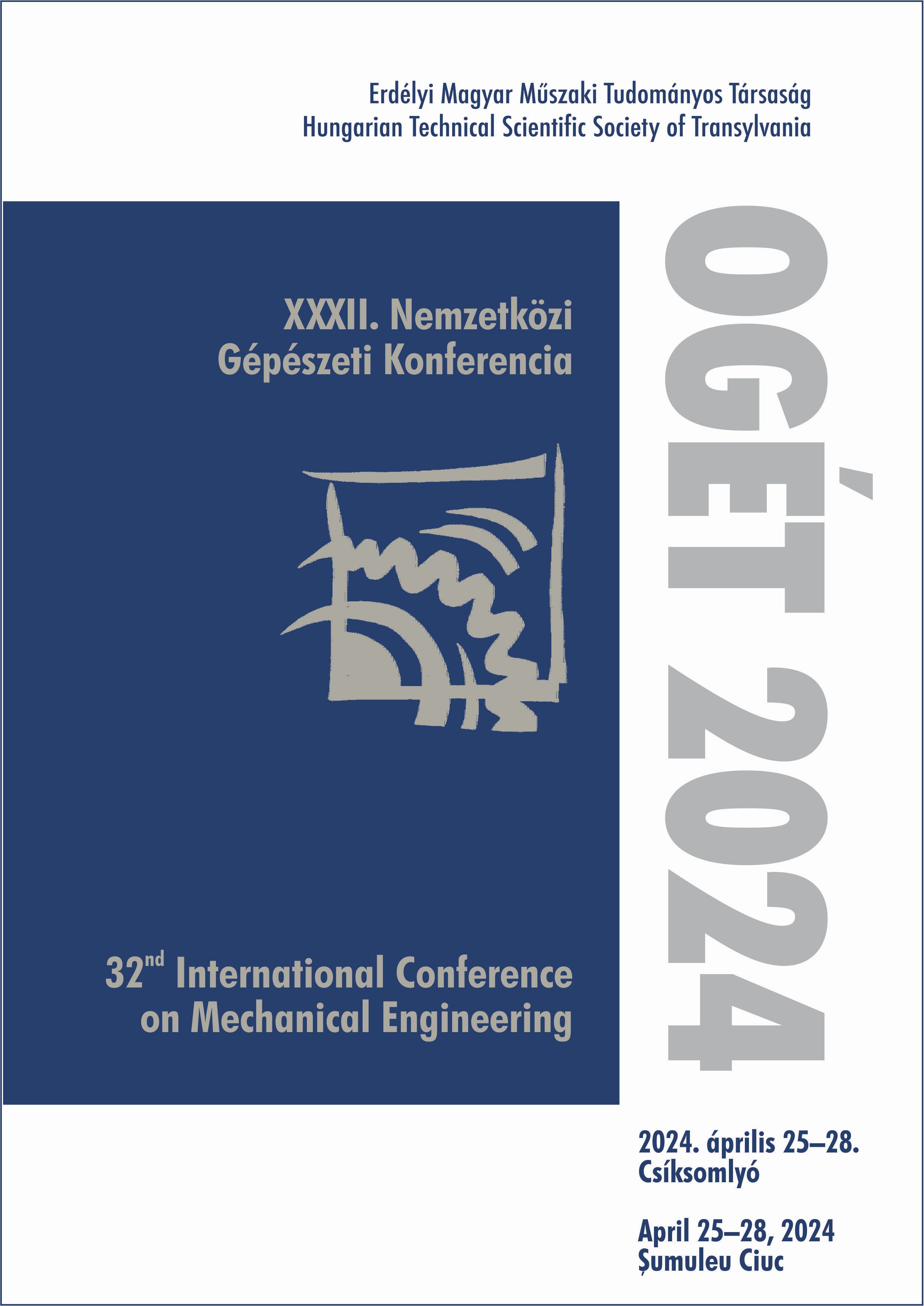Sövényvágógép családok összehasonlító elemzése a mozgást megvalósító mechanizmusok alapján
Comparative analysis of hedge trimmer families based on the mechanisms that implement the movement
Keywords:
hedge trimmer, mechanism, scotch-yoke, /, sövényvágó, mechanizmus, excenterAbstract
Hedge trimmers are most often used in households, thus ensuring ergonomic, noise and vibration requirements is an important aspect. In hedge trimmers, the rotary motion generated by the motor must be converted into linear motion for the hedge trimmer blades. During the motion transformation, it is necessary to ensure that the operation of the mechanism is not accompanied by large vibrations, that the backlash is minimal, and in the case of hand-held tools, the weight of the machine must be minimized. For the reasons listed, one of the frequently used solutions is the use of eccentric mechanisms. By changing the guide path of the eccentric mechanism, different kinematic properties can be achieved, which affects the cutting performance. The article examines the properties of the solutions used in machine families.
Kivonat
A sövényvágókat leggyakrabban háztartásokban használják, így fontos szempont az ergonómiai, a zaj és a rezgéssel szemben támasztott követelmények biztosítása. A sövényvágókban a motor által keltett forgó mozgást a sövényvágó pengék számára lineáris mozgássá kell alakítani. A mozgásátalakítás során törekedni kell arra, hogy a mechanizmus működése ne járjon nagy rezgéssel, a holtjáték minimális legyen, valamint kézben tartott szerszámoknál, törekedni kell a gép tömegének minimalizálására. A felsorolt okok miatt az egyik gyakran alkalmazott megoldás excenteres mechanizmusok használata. Az excenteres mechanizmus vezérpályájának változtatásával különböző kinematikai tulajdonságok érhetők el, ami hatással van a vágási teljesítményre. A cikk a gépcsaládokban alkalmazott megoldások tulajdonságait vizsgálja.
References
H. A. Rothbart, Cam design handbook. New York ; London: Mcgraw-Hill, 2004.
R. L. Norton, Cam design and manufacturing handbook, second edition. Industrial Press, 2009
J. Angeles, C.S. López-Cajún, Optimization of Cam Mechanisms. Springer Science & Business Media, 2012.
A. Borboni, F. Aggogeri, I. Elamvazuthi, G. Incerti, and P. L. Magnani, “Effects of profile interpolation in cam mechanisms,” Mechanism and Machine Theory, vol. 144, p. 103652, doi:10.1016/j.mechmachtheory.2019.103652


